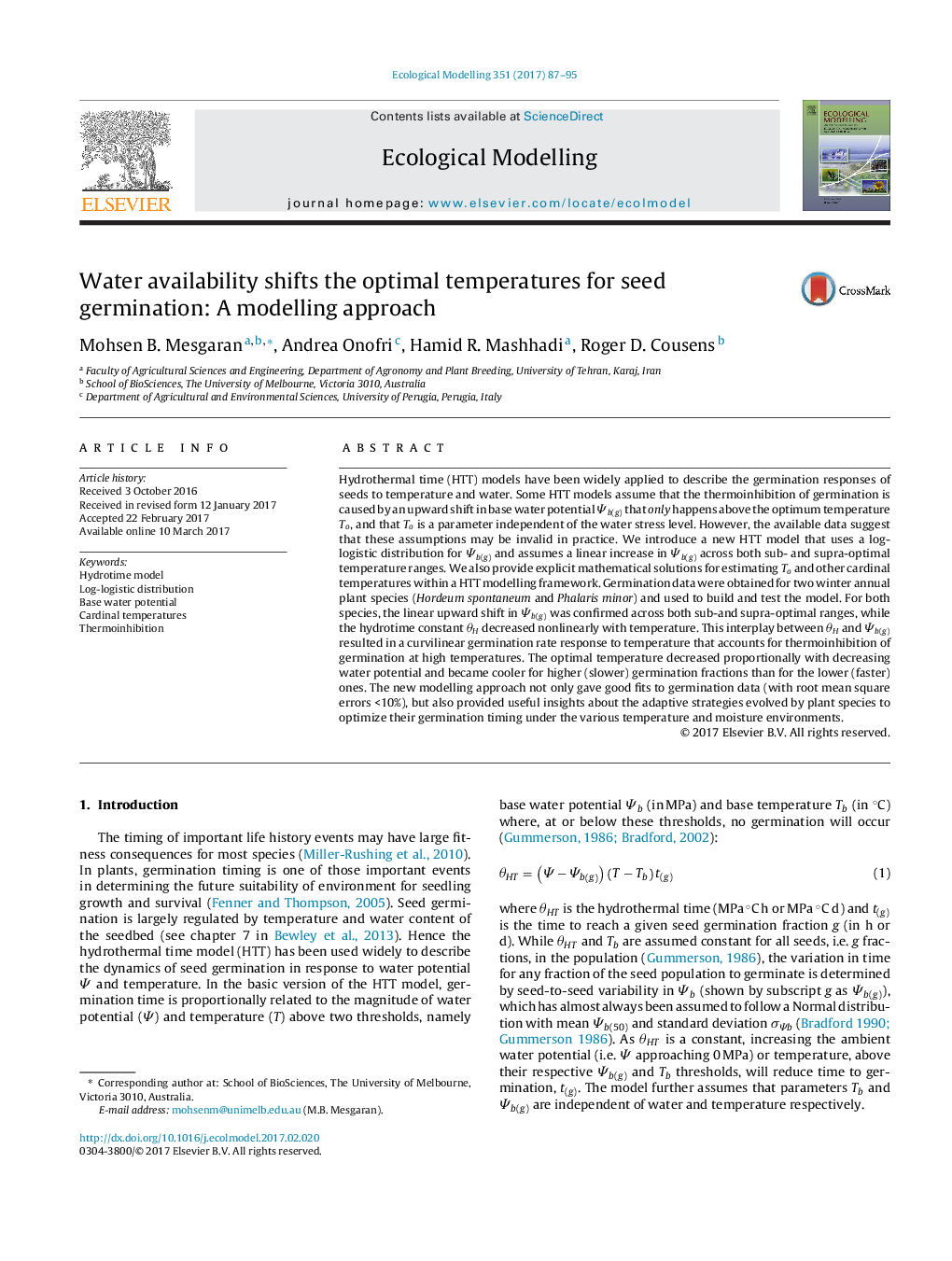| Article ID | Journal | Published Year | Pages | File Type |
|---|---|---|---|---|
| 5742222 | Ecological Modelling | 2017 | 9 Pages |
â¢Hydrothermal time (HTT) models may fail to describe the thermoinhibition of germination.â¢Water stress can reduce the optimal temperature for germination in winter annual plants.â¢Base water potential for germination increased with temperature over both sub- and supra optimal temperatures.â¢A new HTT model was developed that accounts for these interactions and provides insights into the adaption of seeds.
Hydrothermal time (HTT) models have been widely applied to describe the germination responses of seeds to temperature and water. Some HTT models assume that the thermoinhibition of germination is caused by an upward shift in base water potential Ψb(g) that only happens above the optimum temperature To, and that To is a parameter independent of the water stress level. However, the available data suggest that these assumptions may be invalid in practice. We introduce a new HTT model that uses a log-logistic distribution for Ψb(g) and assumes a linear increase in Ψb(g) across both sub- and supra-optimal temperature ranges. We also provide explicit mathematical solutions for estimating To and other cardinal temperatures within a HTT modelling framework. Germination data were obtained for two winter annual plant species (Hordeum spontaneum and Phalaris minor) and used to build and test the model. For both species, the linear upward shift in Ψb(g) was confirmed across both sub-and supra-optimal ranges, while the hydrotime constant θH decreased nonlinearly with temperature. This interplay between θH and Ψb(g) resulted in a curvilinear germination rate response to temperature that accounts for thermoinhibition of germination at high temperatures. The optimal temperature decreased proportionally with decreasing water potential and became cooler for higher (slower) germination fractions than for the lower (faster) ones. The new modelling approach not only gave good fits to germination data (with root mean square errors <10%), but also provided useful insights about the adaptive strategies evolved by plant species to optimize their germination timing under the various temperature and moisture environments.
